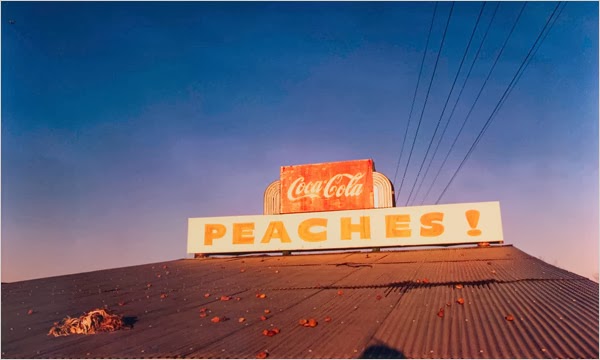Ugh I've been so bad this week at posting! My apologies!! Between the snow days, catching up with class work, have a zillion tests on this morning, and on top of that, having the worst cold of the century, it has set me behind a shit-ton. I have mostly been spending my time cowering under my blankets with multiple rolls of toilet paper to blow my nose into and sipping on tea and honey. Send positive energy to make me feel better because I haven't felt this shitty in awhile. :(
Enough about me, its Photographer Friday!! Yay!
This week I wanted to introduce an iconic photographer, Stephen Shore. The past few weeks I was posting about more portrait-driven photographers, while Shore relates more to what I tend to shoot. His stuff is absolutely amazing and is absolutely inspiring to me on every level. I feel more of a connection to his work than the last few photographers. Yes, McGinley and Collins create beautiful images, but their work is something that I wish I was confident enough to partake in, while Shore's work is something I find myself more drawn to when I am behind the camera.
Stephen Shore is another American photographer, who works primarily with film. He began using 35mm, and then medium format, and eventually into the world of large format, or 8x10. For those of you who have no idea what I am talking about, I will post images below with what these types of film cameras are. Large format allows the photographer to work with the largest size negative, which allows them in the darkroom to create beautiful, larger images, without losing any detail. Anyway, Shore has managed to create beauty in the seemingly banal scenes in American landscape. It is pure beauty and has always been an inspiration. He is alive and well today and is the director of photography at Bard College.







For those of you who have no idea what I was talking about in terms of cameras, let me teach you all briefly about the beautiful and lovely world of film photography! A lot of modern day photographers and artists consider film a dead art, but if one is interested in a more fine art approach to the arts, I think film is the only way to go. Personally, when I am creating a film image, my work is so much closer to me. When I am snapping away with a DSLR, (digital single-lens reflex camera) I never feel the same connection to my work. Film has much more of a process and everything must be correct the first time around. Sure, you can correct for a lot of things in the darkroom, but if you had just gotten in correct the first time around you would spend significantly less time and money correcting. There is also a limited amount of images that one can take so every photograph you think that you see, you must be pretty sure that this is something you want to capture. With digital, everything is just click click click and then delete later. You basically have unlimited attempts with little to no consequence at an image. If you are a complete novice with the workings of a camera and what all of the lingo means, thats okay you can be a pro on photoshop and fix it all later. Which I strongly disagree with.
Anyway, the cameras I was discussing earlier were 35mm, medium format (120), and large format (8x10). Each camera produces different sizes and works with different size negatives, and it is truly up to the photographer themselves what they would like to deal with. 35mm is the most common now because of it is easy and portable. Medium format is also somewhat still popular because, again it is easy and portable. Large format is not portable for a long shoot by any means. I would not take my large format camera and walk around the city all day just hoping to find an image. The benefit to large format is being able to capture and keep a lot of detail in the image. The smaller the negative is and the larger you want your image to be, the more you enlarge it in an enlarger in the darkroom, the more information you are losing. Larger negatives allow for larger prints and a lot more detail within the image. Each has a very different process in which the image is projected onto it's negative and then later how it is processed in the darkroom. There is so much information about photography, especially film, that I feel needs to be shared because so many individuals have not even an inclining about it. It is a lovely form of art that I think should be taken advantage of more on a daily basis, way more so than using anything digital. If anyone has any questions, needs something elaborated on, or ever needs to know anything about photography, please, please contact me! I am always willing to help and to educate! (I'm sorry for writing so much today but I miss practicing photography full-time so this was somewhat of a rant for me.)

35mm film camera
A medium format, 120mm, camera. This camera is also twin-reflex lens.
Medium format, 120mm, single-lens reflex.
Large format, 8x10, on a tripod.
Large format camera, 8x10
DSLR
















































